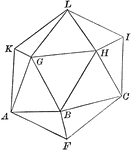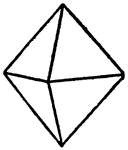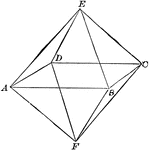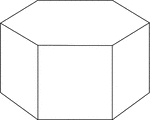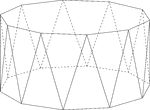
Decagonal Antiprism
Illustration of a decagonal antiprism. An antiprism is formed by having two parallel congruent bases…
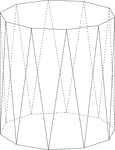
Decagonal Antiprism
Illustration of a decagonal antiprism. An antiprism is formed by having two parallel congruent bases…

Dodecagonal Antiprism
Illustration of a dodecagonal antiprism. An antiprism is formed by having two parallel congruent bases…
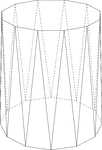
Dodecagonal Antiprism
Illustration of a dodecagonal antiprism. An antiprism is formed by having two parallel congruent bases…

Heptagonal/Septagonal Antiprism
Illustration of a heptagonal, or sometimes known as a septagonal antiprism. An antiprism is formed by…
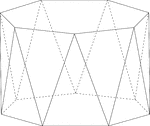
Heptagonal/Septagonal Antiprism
Illustration of a heptagonal, or sometimes known as a septagonal antiprism. An antiprism is formed by…
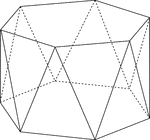
Hexagonal Antiprism
Illustration of a hexagonal antiprism. An antiprism is formed by having two parallel congruent bases…
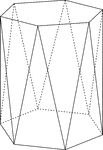
Hexagonal Antiprism
Illustration of a hexagonal antiprism. An antiprism is formed by having two parallel congruent bases…
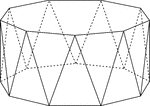
Nonagonal Antiprism
Illustration of a nonagonal antiprism. An antiprism is formed by having two parallel congruent bases…
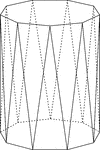
Nonagonal Antiprism
Illustration of a nonagonal antiprism. An antiprism is formed by having two parallel congruent bases…

Octagonal Antiprism
Illustration of an octagonal antiprism. An antiprism is formed by having two parallel congruent bases…
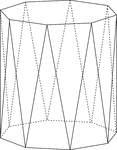
Octagonal Antiprism
Illustration of an octagonal antiprism. An antiprism is formed by having two parallel congruent bases…
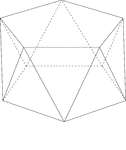
Pentagonal Antiprism
Illustration of a pentagonal antiprism. An antiprism is formed by having two parallel congruent bases…

Pentagonal Antiprism
Illustration of a pentagonal antiprism. An antiprism is formed by having two parallel congruent bases…
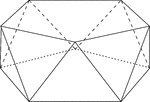
Pentagonal Antiprism
Illustration of a pentagonal antiprism. An antiprism is formed by having two parallel congruent bases…
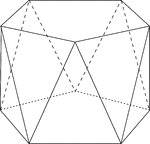
Pentagonal Antiprism
Illustration of a pentagonal antiprism. An antiprism is formed by having two parallel congruent bases…
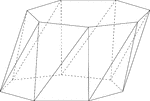
Skewed Heptagonal/Septagonal Antiprism
Illustration of a skewed (non-right) heptagonal, or sometimes known as a septagonal antiprism. An antiprism…
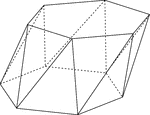
Skewed Hexagonal Antiprism
Illustration of a skewed (non-right) hexagonal antiprism. An antiprism is formed by having two parallel…

Skewed Nonagonal Antiprism
Illustration of a skewed (non-right) nonagonal antiprism. An antiprism is formed by having two parallel…

Skewed Octagonal Antiprism
Illustration of a skewed (non-right) octagonal antiprism. An antiprism is formed by having two parallel…
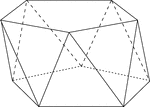
Skewed Pentagonal Antiprism
Illustration of a skewed (non-right) pentagonal antiprism. An antiprism is formed by having two parallel…

Regular Dodecahedron
Illustration of a regular dodecahedron. A regular dodecahedron is a polyhedron with twelve equal pentagonal…
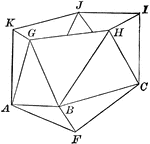
Part of an Icosahedron
Illustration of the bottom part of an icosahedron. The base consists of a regular pyramid, upon which…
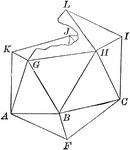
Partial Construction of an Icosahedron
Illustration of the steps to a construction of an icosahedron. The base consists of a regular pyramid,…
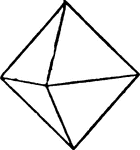
Octahedral Crystal
An illustration of an octahedral crystal. An octahedron is a polyhedron with eight faces. A regular…

Parallelopiped with Plane Passing Through
Illustration of a parallelopiped with a plane passing through two diagonally opposite edges. The plane…

Parallelopiped with Plane Passing Through
Illustration of a parallelopiped with a plane passing through two diagonally opposite edges. The plane…
Parallelopiped Showing Volume
Illustration of a parallelopiped (a prism with a parallelogram as its base) used to demonstrate that…

Similar Polyhedrons
Two similar polyhedrons may be decomposed into the same number of tetrahedrons similar, each to each,…

Two Similar Polyhedrons
Diagram used to prove the theorem: "Two similar polyhedrons may be decomposed into the same number of…
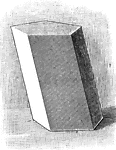
Prism
Illustration of a prism - a polyhedron of which two faces are equal polygons in parallel planes, and…
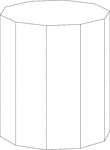
Decagonal Prism
Illustration of a right decagonal prism with regular decagons for bases and rectangular faces.

Decagonal Prism Resting On Its Side
Illustration of a right decagonal prism with regular decagons for bases and rectangular faces. The prism…
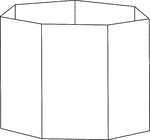
Heptagonal/Septagonal Prism
Illustration of a hollow right heptagonal/septagonal prism with regular heptagons/septagons for bases…
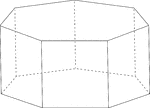
Heptagonal/Septagonal Prism
Illustration of a regular right heptagonal/septagonal prism with regular heptagons/septagons for bases…

Heptagonal/Septagonal Prism
Illustration of a right heptagonal/septagonal prism with regular heptagons/septagons for bases and rectangular…
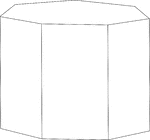
Heptagonal/Septagonal Prism
Illustration of a right heptagonal/septagonal prism with regular heptagons/septagons for bases and rectangular…

Hexagonal Prism
Illustration of a right hexagonal prism with a height less than the length of the edge of the hexagon.

Hexagonal Prism
Illustration of a right hexagonal prism with a height greater than the length of the edge of the hexagon.
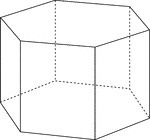
Hexagonal Prism
Illustration of a right hexagonal prism with hexagons for bases and square faces. The hidden edges are…

Hexagonal Prism
Illustration of a right hexagonal prism with hexagons for bases and rectangular faces. The height of…
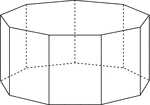
Nonagonal Prism
Illustration of a right nonagonal prism with regular nonagons for bases and rectangular faces. The hidden…
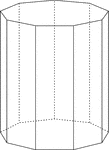
Nonagonal Prism
Illustration of a right nonagonal prism with regular nonagons for bases and rectangular faces. The height…
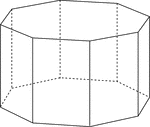
Octagonal Prism
Illustration of a right octagonal prism with regular octagons for bases and rectangular faces. The hidden…
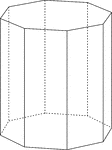
Octagonal Prism
Illustration of a right octagonal prism with regular octagons for bases and rectangular faces. The height…
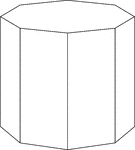
Octagonal Prism
Illustration of a right octagonal prism with octagons for bases and rectangular faces. The height of…

Octagonal Prism Resting On Side
Illustration of a right octagonal prism, with octagons for bases and rectangular faces, that is resting…



